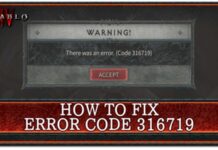Understanding Encumbrance: A claim can be made against property by someone who is not the owner, which can restrict its use or transfer until it is lifted. A few typical types of encumbrances are mortgages, liens from property taxes, leases, encroachments, and easements.
Understanding Encumbrance: Types of Encumbrance
mortgage burden
This is an agreement between a money lender and a borrower, most often a home buyer. If a borrower does not make loan payments as agreed, the lender could take the collateral by evicting occupants.
Liens
If the debt is not repaid, the creditor can take possession of the property as security. The lender might sell the property to recoup their investment after seizing it.
Property Tax Rebate: Check eligibility criteria and more details
Easement
This gives one party the authority to develop or impose restrictions on the usage of another person’s land. A utility company, such as MGL Piped Gas Line, may have permission to run its line through a third party’s land.
Encroachment
In this scenario, a non-landowner seizes ownership of the property and makes it his own. Building a border wall around the land does this. One cannot use the encroached land freely. Keep in mind that someone building illegally on property does not own it. This kind of encumbrance impacts both parties. Since he does not own the land or property he has encroached onto, neither the landlord nor the person who did the encroachment can utilize it freely.




